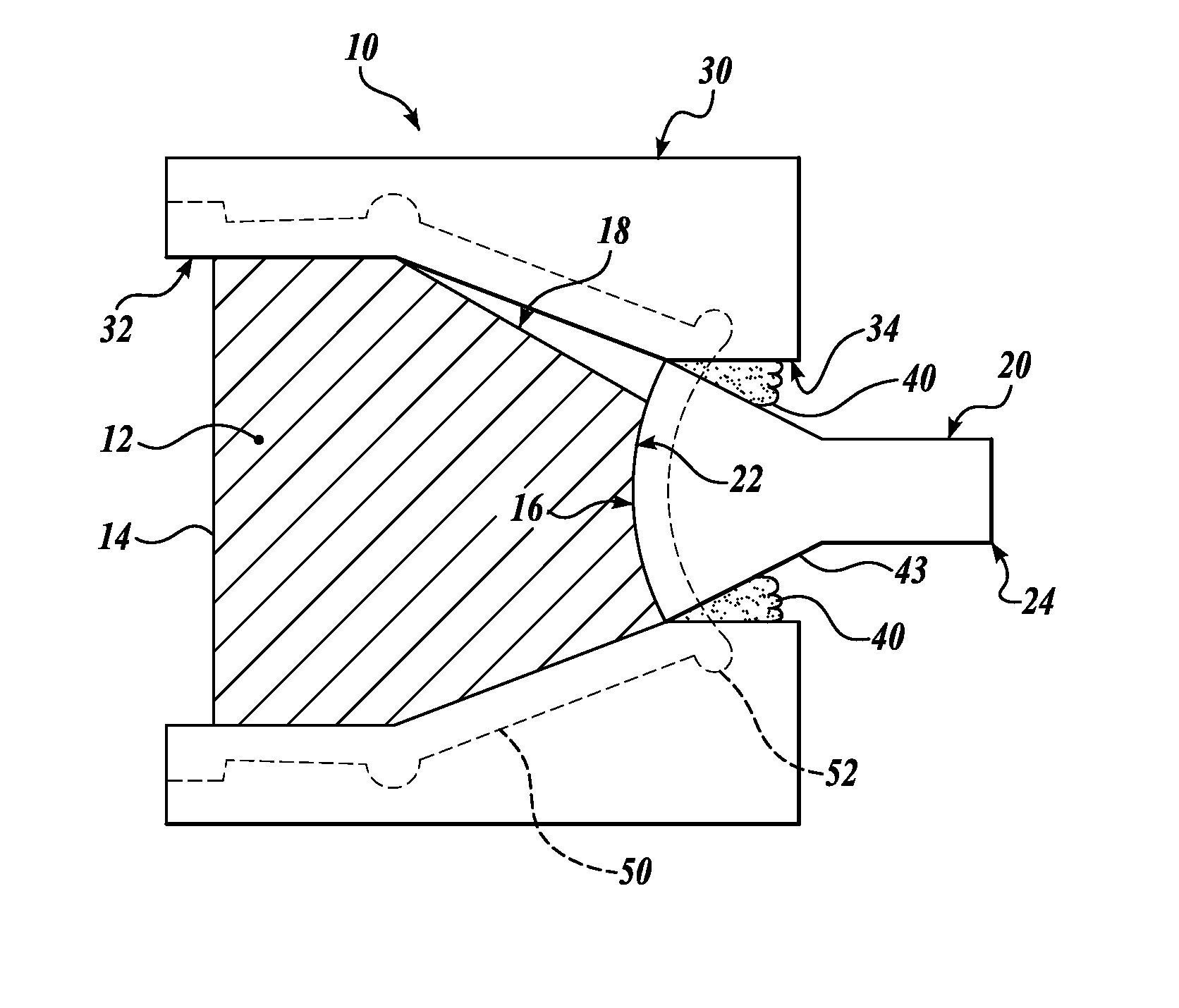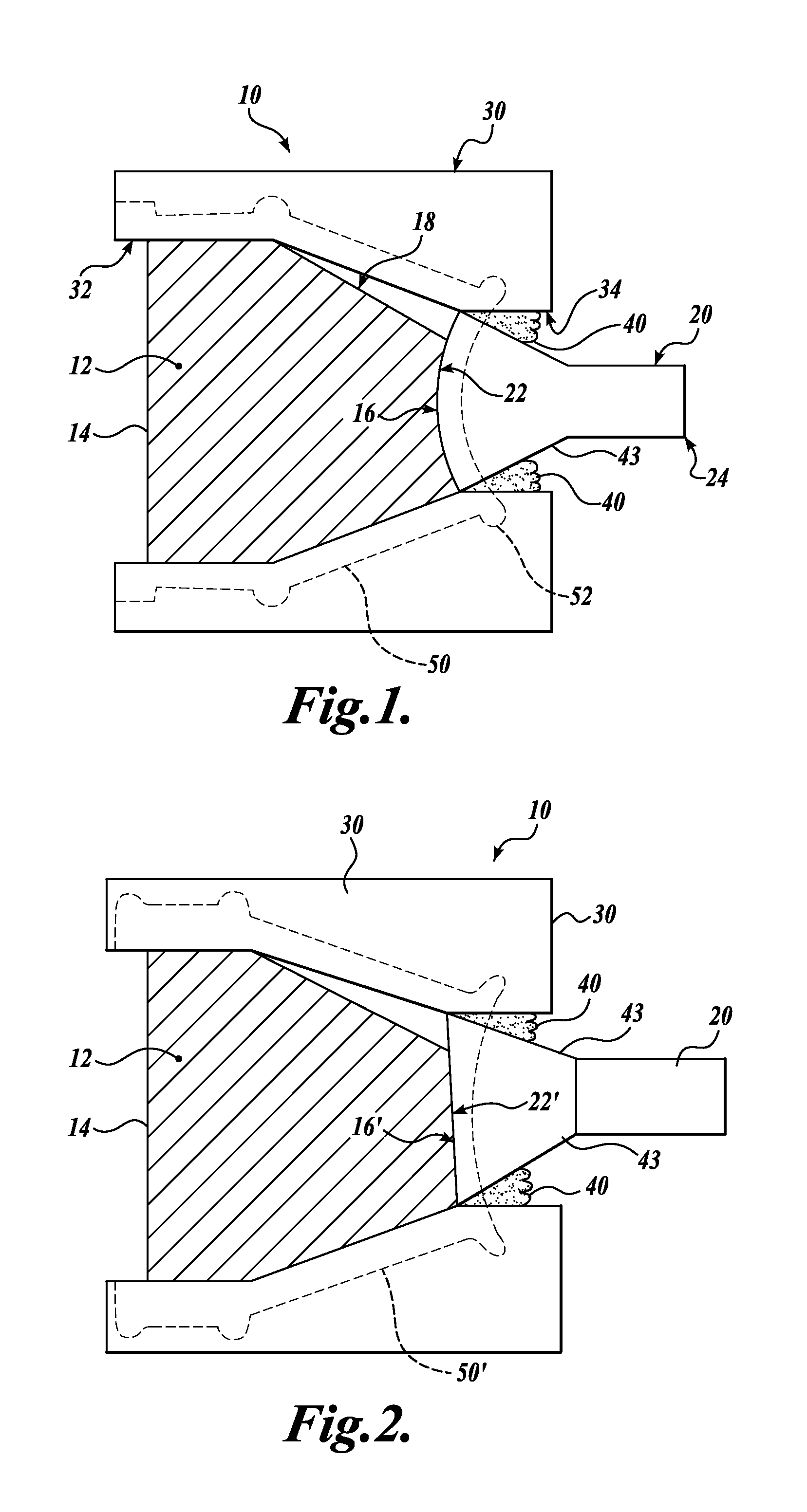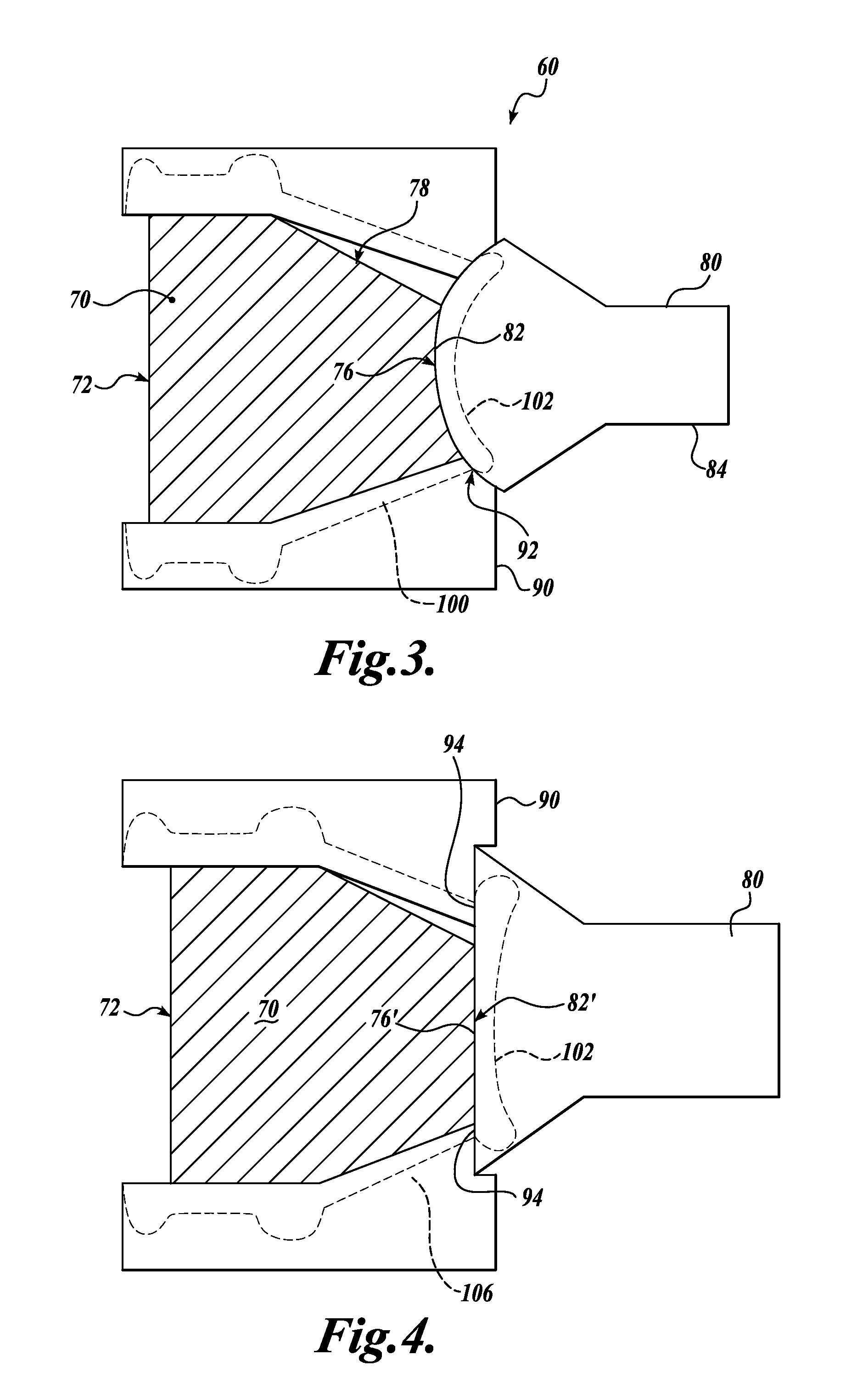Ophthalmologic lens assembly
a technology of ophthalmologic lenses and lenses, applied in the field of optical lenses and ophthalmologic lenses with, can solve the problems of lens lenses that use tir surfaces are also susceptible to tir failure, lenses also suffer from the drawbacks of plastic prisms, and glass prism lenses can be coated with high-performance materials that are not possible to adhere to plastic lenses
- Summary
- Abstract
- Description
- Claims
- Application Information
AI Technical Summary
Benefits of technology
Problems solved by technology
Method used
Image
Examples
Embodiment Construction
[0017]As will be set forth in detail below, the technology described herein relates to an ophthalmologic lens assembly that incorporates a glass prism that may have one or more reflecting surfaces that use TIR. To protect the prism and the reflecting surfaces of the prism, the glass prism is surrounded by a housing, which is secured and sealed to a meniscus lens. In some embodiments, the meniscus lens is made of the same or a similar material as the housing such that the housing and meniscus lens can be bonded together in order to seal the glass prism in the housing.
[0018]As shown in FIG. 1, an ophthalmologic lens assembly 10 includes a glass prism 12 having an anterior lens surface 14 and a posterior lens surface 16. In some embodiments, the glass prism includes one or more reflecting surfaces 18 cut or formed into the glass prism 12 that reflect light by total internal reflection. In one embodiment, the glass prism 12 is made of quartz. However, other optical glasses could be used...
PUM
| Property | Measurement | Unit |
|---|---|---|
| total internal reflection | aaaaa | aaaaa |
| diameter | aaaaa | aaaaa |
| sharp angles | aaaaa | aaaaa |
Abstract
Description
Claims
Application Information
 Login to View More
Login to View More - R&D
- Intellectual Property
- Life Sciences
- Materials
- Tech Scout
- Unparalleled Data Quality
- Higher Quality Content
- 60% Fewer Hallucinations
Browse by: Latest US Patents, China's latest patents, Technical Efficacy Thesaurus, Application Domain, Technology Topic, Popular Technical Reports.
© 2025 PatSnap. All rights reserved.Legal|Privacy policy|Modern Slavery Act Transparency Statement|Sitemap|About US| Contact US: help@patsnap.com



